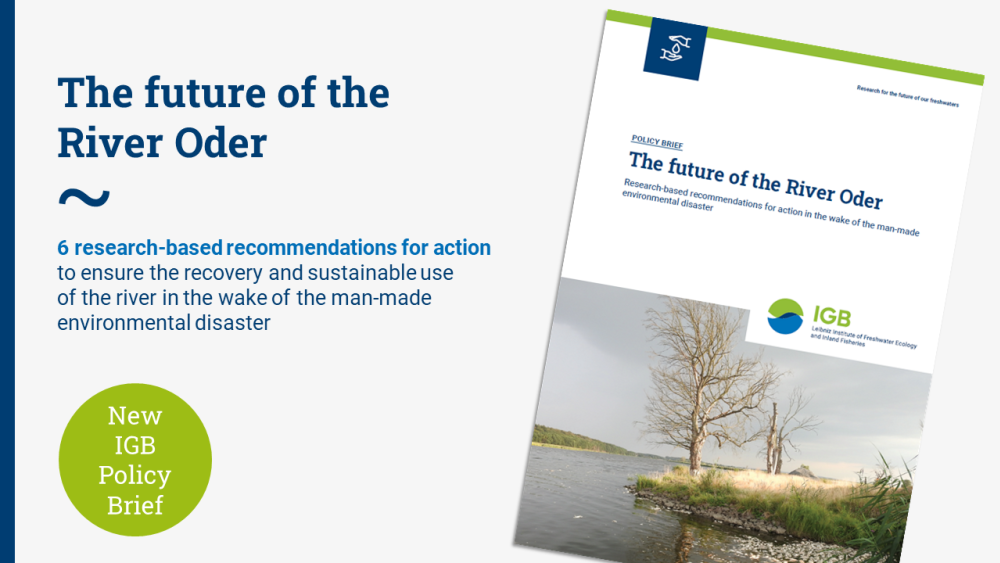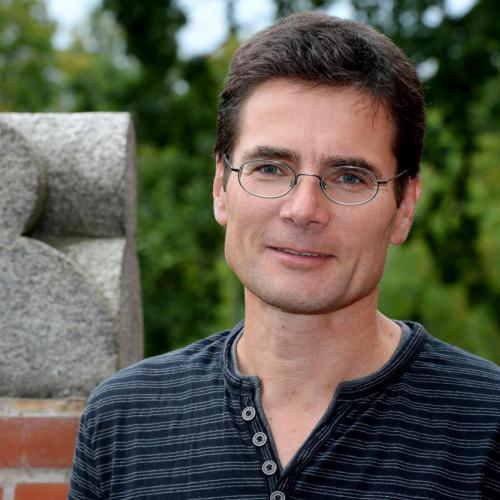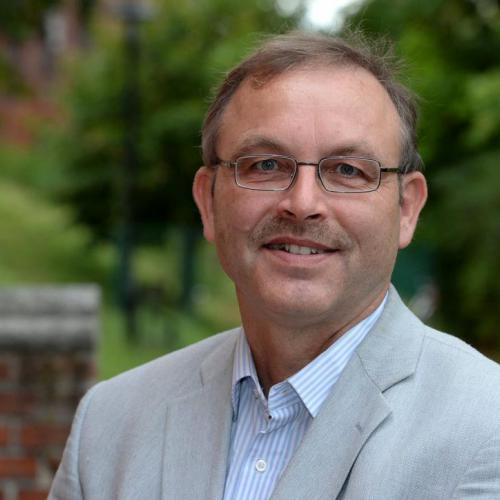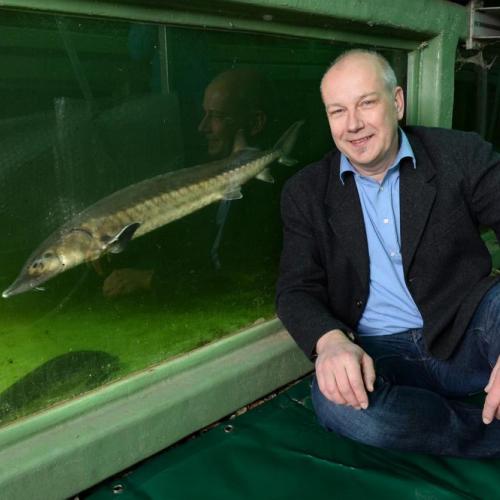
This IGB Policy Brief provides a concise summary of what is known about the causes of the fish kill, and what measures policymakers and authorities should take to restore and preserve the River Oder habitat and its important ecosystem services. | © Luc De Meester/IGB
The detailed analysis of the Oder disaster is still ongoing. However, IGB has been able to show that it was not a natural phenomenon, but a man-made problem: the mass development of the toxic brackish water alga Prymnesium parvum was the main culprit. Excessive salt concentrations due to industrial discharges had created an artificial habitat for this alga. "In the River Oder, the toxin-producing brackish water alga Prymnesium parvum proliferated to an extent as never before observed in our waters, to my knowledge," explained algae expert Jan Köhler. High nutrient concentrations in the water (likewise caused by anthropogenic inputs), high water temperatures, partial damming and low water flow in the River Oder owing to a prolonged period of drought also provided ideal conditions for its growth.
The toxin produced by the alga led to the mass mortality in fish, mussels and water snails in August. Now the biomass of the perished animals is being decomposed by bacteria. This process can lead to extreme lack of oxygen, in turn causing additional fish mortality downstream, as can now be observed in various sections of the River Oder and its backwaters.
Nature-based solutions: reduce stress factors and put a stop to river engineering works
The environmental disaster occurred as a result of several stress factors, all of which were caused by human activity. These stress factors also had such a disastrous effect on the Oder because previous development measures had reduced the river’s natural resilience to hydrological and climate change. "We see the River Oder disaster as a multicausal, man-made event. There have been frequent occurrences of increased salinity due to industrial pollution in the upper reaches of the Oder in the past, without resulting in such massive algal blooms. But the general conditions now seem to have changed. If salt levels do not decrease and we continue to experience excessively hot and dry summers due to climate change, such mass developments of toxic algae could occur again in the future," said IGB scientist Tobias Goldhammer.
In the wake of the River Oder disaster, it is therefore crucial from a scientific perspective to protect and restore the river and its remaining near-natural habitats – instead of implementing further regulation of the river by means of additional river engineering measures. In 2020, IGB had already warned of the ecological risks of developing the Oder in a previous IGB Policy Brief.
Now IGB researchers are once again recommending a review of the infrastructure project on both sides of the river. In addition, further measures should be taken to stabilise the Oder’s ecosystem and ensure its sustainable use in the future. "The future of the River Oder and its wildlife will depend on whether policymakers and authorities decide to enhance the natural resilience of the ecosystem," emphasised IGB biologist Jörn Geßner. Christian Wolter, fish ecologist at IGB, agreed that restoration is the best way to prevent crisis: "Besides being an essential basis for mankind’s existence, intact riverine landscapes are centres of biodiversity." And he underlined: "To promote their resilience and adaptation to climate change, natural processes for flood protection and water retention in the landscape must be revitalised, and interventions reduced or mitigated wherever possible."
The scientists formulate the following six research-based recommendations for action, explained in greater detail in the latest IGB Policy Brief:
- River engineering works to deepen or regulate the Oder should be discontinued
- Emissions should be reduced through lower threshold values and restricted cooling water use
- The main river should be restored and reconnected to its backwaters
- There should be no stocking with non-native fish
- Internationally coordinated water management should be intensified
- A digital monitoring system with freely accessible data should be expanded
The IGB Policy Brief entitled "The future of the River Oder: Research-based recommendations for action in the wake of the man-made environmental disaster" can be downloaded free of charge from the IGB website and shared.
In addition, a detailed document accompanying the IGB Policy Brief provides concrete proposals for the revitalisation of sections of the Oder. This document is also available for download at no cost (in German language only) >
~
The IGB authors are available for detailed exchange with policymakers, authorities and associations.
Statements of the authors

“In the River Oder, the toxin-producing brackish water alga Prymnesium parvum proliferated to an extent as never before observed in our waters, to my knowledge. The alga grows in a salinity of two to 30 parts per thousand. Under natural conditions, however, freshwater has less than one part per thousand salt content. A huge influx of salt must therefore have provided optimal conditions for this algae in the Oder. Algal development was driven by high nutrient loads in the water, unusually high water temperatures, and barrages in the upper reaches, which reduce flow velocity.” Dr. Jan Köhler
“We see the River Oder disaster as a multicausal, man-made event. There have been frequent occurrences of increased salinity due to industrial pollution in the upper reaches of the Oder in the past, without resulting in such massive algal blooms. But the general conditions now seem to have changed. If salt levels do not decrease and we continue to experience excessively hot and dry summers due to climate change, such mass developments of toxic algae could occur again in the future.” Dr. Tobias Goldhammer

“Under a changing climate, we will increasingly experience periods of drought with low water levels, low oxygen levels and higher water temperatures. Low water levels can result in increased concentrations of harmful substances, because they are diluted in a much smaller volume of water. Emissions should therefore be adapted to the condition of the water body, and discharge limits reduced accordingly.” Dr. Stephanie Spahr

“The environmental disaster on the River Oder demonstrates that existing control mechanisms are unable to prevent such pollution incidents. To ensure that such a disaster will not happen again, it is crucial to improve measuring devices, the online availability of monitoring data, and official reporting chains on all rivers. Given that the mass fish die-off was first detected by anglers, citizen science networks to protect the river should be supported.” Dr. Martin Pusch

“The future of the River Oder and its wildlife will depend on whether policymakers and authorities decide to enhance the natural resilience of the ecosystem. After all, restoration is the best way to prevent such a crisis. In order to protect fish stocks, it is particularly important in the medium term to increase the availability of spawning and early life phase -rearing habitats in the Oder River. This would provide the sturgeon – and hence many other typical freshwater fish species – with better starting conditions for successful self-reproduction. In addition, more backwaters should be connected to the river in the long term to create refuges.” Dr. Jörn Geßner
“Besides being an essential basis for mankind’s existence, intact riverine landscapes are centres of biodiversity. To promote their resilience and adaptation to climate change, natural processes for flood protection and water retention in the landscape must be revitalised, and interventions reduced or mitigated wherever possible. Technical, river engineering measures alone, on the other hand, increase the risk of such disasters occurring again. Dams do not contribute to sustainable water retention, and have no role to play in a meaningful adaptation to climate change. On the contrary: they promote evaporation, retain sediments, and even contribute to depth erosion and landscape drainage downstream.” Dr. Christian Wolter









